A Guide To Fishing With Metal Lures
09 May 2021
0 Comments
by Jimmy Fee September 4, 2013
All eyes were locked on the horizon: a mix of stripers and blues had driven a school of sand eels to the surface. The frenzy attracted a flock of gulls, which in turn attracted a picket line of fishermen planting their feet right at the water’s edge. I stood among the surfcasters, willing the blitz to move into range.
Come on, a little closer… a little closer… Here we go!
The diving birds and breaking fish finally moved within the 100-yard mark, and every angler sprang into action. I unleashed a herculean cast with my 11-foot surf rod and listened to the line pour through the guides, carried by the weight of the lure. I saw it land with a plunk right in the middle of the school of fish. A few other fishermen landed casts ingot he fray as well, but as I picked up my slack line and began my retrieve, most of the other fishermen were frantically reeling in surface poppers to take a second shot at reaching the action. Three turns into my retrieve, I hooked up, and a quick glance down the beach revealed that every angler using a metal lure was leaning back into a fish.
It’s for moments like this that every surfcaster needs to keep a few of these simple, effective, long-casting lures in their plug bag. Reaching distant fish, however, is not the only reason to stock up on metal lures, or “casting tins,” as they are often called by surfcasters.
For years, I used metal lures for two reasons only: to reach out-of-range blitzes and to feed bluefish an offering they couldn’t destroy. I bought into several widespread misconceptions about these lures: that metals only catch bass during a blitz, that metals won’t work at night, that metals need to be fished with a fast retrieve. As a result, I failed to take advantage of the extraordinary versatility of metal lures in the surf.
Metals come in an array of sizes and styles from a number of manufacturers, but there are a few qualities that hold true for all of them. For one, metals are the best-casting lures available to the surfcaster, period. The combination of heavy weight and relatively small size allows anglers to load up the rod and send the lures seaward with minimal wind resistance. Metals can be worked in a variety of ways: bounced along the bottom, swum through the middle of the water column, even splashed across the surface as topwaters. Metals can mimic almost any baitfish and will tempt almost every species that ventures into the Northeast surf. I’ve caught stripers, blues, fluke, weakfish, croakers, cow- nose rays, false albacore and Spanish mackerel on metal lures cast from the beach.
Metal Selection and Tactics
Your local tackle shop probably has a whole wall devoted to metal lures, and the question of which to buy can be a bit confounding. Choosing a metal depends largely on the target species, the prevalent baitfish and the water conditions. For surfcasting in the Northeast, I divide metal lures into four categories: sand eel imitators, peanut bunker/sea herring imitators, general purpose metals and niche metals.
Sand Eel Imitators
Sand-eel-imitating metals, like the Point Jude PoJee and the Ava Jig with tubing, are permanent fixtures in my plug bag. Slim, sand-eel-mimicking metal lures don’t have much inherent action, but anglers can impart their own action to make them irresistible to fish. When fishing these lures, keep the habits of sand eels in mind. They will burrow into the sand, so occasionally dragging your metal along the bottom to send up a puff of debris might get the attention of any nearby bass. Lifting and dropping these lures is another effective retrieve. A steady retrieve while intermittently pumping the rod will also draw strikes from sand-eel-crazed bass and blues.
When diving birds or spraying baitfish aren’t betraying the location of feeding fish, try casting these metals over sandbars and working them through the white water formed by breaking waves. If there are sand eels in the area, this method is close to a sure thing. Waves breaking over sandbars dislodge the skinny baitfish, and bass and blues wait in the deeper water at the edges of these bars for an easy meal.
Lures from 1 to 2 ounces will work under most conditions, but if the current is running hard or there is a strong onshore wind, bumping up to a 3-ounce metal could save the day.
Given its small profile, this type of metal lure will sink quickly, so it requires a relatively fast retrieve if you want to keep it above the bottom. If a slow retrieve is needed to hook fish, you’ll have to turn to a wide-profile metal lure.
Peanut Bunker/Sea Herring Imitators
When deep-bodied baitfish like mullet, peanut bunker and sea herring are running the beaches in the fall, I clip on metal lures with similarly wide profiles that ride high in the water column, have a lot of wobble and give off a lot of flash. The Point Jude Butterfish, Point Jude Sea Scallop and the Krocodile spoon perfectly imitate these baitfish.
These metals work well on a straight, slow retrieve since their wide profile causes them to plane toward the surface. I’ll add in the occasional stop to let the lure flutter to the bottom, and quite often the strikes will come as soon as I resume my retrieve. I’ll cast them along the edges of peanut bunker schools or next to jetties or rockpiles that slow down the baitfish on their migration south.
With these lures, the objective is to fish high in the water column with a relatively slow retrieve, so lures from 1 to 2 ounces work best. Clip on something heavier than that, and you’ll have to retrieve too fast for it to be effective.
General Purpose Metals
General purpose metals are the ones that I use throughout the year for a wide variety of species. The lures that fall under this category are the Hopkins No=Eql, Kastmaster, Point Jude Nautilus and A.O.K. T-Hex, all with bucktail teaser hooks. I especially like using these metals along sandy beaches that have structure a long way from the shoreline. In these situations, when soft-plastic lures, bucktails and even most plugs won’t reach the fish-holding water, I turn to “general purpose” metals. These lures can be effective on very slow retrieves, allowing you to keep the lure in the strike zone longer, especially if that strike zone is at the end of your cast.
I also use these metals as prospecting lures to find fish that are spread out. One early September morning, I walked along about a mile of sandy beach casting a Hopkins Shorty. There was relatively little structure and only a few scattered schools of small baitfish – nothing to concentrate the fish. I made my way down the beach, casting indiscriminately, switching my retrieve from slow and steady to fast and erratic to bottom-bouncing. By the end of the trip, I’d caught stripers, bluefish, and a number of fluke, including one keeper. By slightly altering the retrieve, I was able to target several species with the same lure.
Niche Metals
The term “niche metals” refers to lures that excel at one specific application. For example, 3⁄4- to 1-ounce Deadly Dicks and Swedish Pimples are outstanding false albacore and bonito lures, but I rarely, if ever, use them when these speedsters aren’t around. Other metal lures in this category are the heavy 4- to 5-ounce Crippled Herring lures I use in the Cape Cod Canal and the 4-ounce Kastmasters and Ava jigs I use during fall Nor’easters. During these storms, when the wind is screaming and the waves are building but the water has not yet become silted up, heavy metals shine.
Regardless of which metals you purchase, I can offer one piece of advice: don’t wait until the bite is on to go buy them. The popularity of metal lures is almost cyclical, as if anglers never think of buying them until they absolutely need them. In the spring, once the blues show up, it’s pretty much guaranteed that tackle shops will sell out of Krocodile spoons and Kastmasters. The first reports of false albacore are sure to clean out supplies of Deadly Dicks. Once the stripers begin gorging on sand eels in the late fall, finding Ava jigs in the right size can be a chore. It pays to buy the metals you might need well ahead of when you plan to use them.
Tips for Fishing Metals
Though fishing with metal lures is pretty straightforward once you’ ve learned which styles to fish and when to fish them, these tips will help you catch more fish on these classic lures.
An 8- to 11-foot surf rod rated from 1 to 3 or 4 ounces will cover most of your metal fishing needs. Just make sure the lures you are casting fall within the capabilities of your rod. A moderate- to fast-action rod will work just fine, but the faster the rod action, the farther you will be able to cast metals.
Because metals occasionally spin during the retrieve, use a barrel swivel to attach your leader to your main line. Otherwise, your line will twist and eventually cause a major tangle.
I don’t like using metal lures with treble hooks. It makes unhooking fish more difficult, and hooksets simply aren’t as solid with a treble hook. A large Siwash hook has more “bite,” allowing for more secure hooksets and fewer lost fish. A single hook dressed with bucktail gives the lure some added appeal, as well.
Metals make an excellent lure to “deliver” lightweight teasers to fish that are focused on small baits. In the fall, when bass, blues and albies key in on small bay anchovies or sand eels, fishing a teaser will sometimes be the only way to get a bite. Because teaser rigs increase an offering’s wind resistance, fishing teasers reduces casting distance. Coupling teasers with metal lures, however, will mitigate this problem and help you reach the feeding fish. When using slim metals that also “match the hatch,” double headers are not uncommon.
The only limitations metal lures have in the surf are the ones you impose on them. When you factor in how well metal lures cast, they may be even more versatile than the bucktail jig. So toss some of these oft-overlooked lures into your plug bag next time you’re headed for the high surf. Casting tins have been catching striped bass and blues for generations and will continue to do so for many years to come.
All eyes were locked on the horizon: a mix of stripers and blues had driven a school of sand eels to the surface. The frenzy attracted a flock of gulls, which in turn attracted a picket line of fishermen planting their feet right at the water’s edge. I stood among the surfcasters, willing the blitz to move into range.
Come on, a little closer… a little closer… Here we go!
The diving birds and breaking fish finally moved within the 100-yard mark, and every angler sprang into action. I unleashed a herculean cast with my 11-foot surf rod and listened to the line pour through the guides, carried by the weight of the lure. I saw it land with a plunk right in the middle of the school of fish. A few other fishermen landed casts ingot he fray as well, but as I picked up my slack line and began my retrieve, most of the other fishermen were frantically reeling in surface poppers to take a second shot at reaching the action. Three turns into my retrieve, I hooked up, and a quick glance down the beach revealed that every angler using a metal lure was leaning back into a fish.
It’s for moments like this that every surfcaster needs to keep a few of these simple, effective, long-casting lures in their plug bag. Reaching distant fish, however, is not the only reason to stock up on metal lures, or “casting tins,” as they are often called by surfcasters.
For years, I used metal lures for two reasons only: to reach out-of-range blitzes and to feed bluefish an offering they couldn’t destroy. I bought into several widespread misconceptions about these lures: that metals only catch bass during a blitz, that metals won’t work at night, that metals need to be fished with a fast retrieve. As a result, I failed to take advantage of the extraordinary versatility of metal lures in the surf.
Metals come in an array of sizes and styles from a number of manufacturers, but there are a few qualities that hold true for all of them. For one, metals are the best-casting lures available to the surfcaster, period. The combination of heavy weight and relatively small size allows anglers to load up the rod and send the lures seaward with minimal wind resistance. Metals can be worked in a variety of ways: bounced along the bottom, swum through the middle of the water column, even splashed across the surface as topwaters. Metals can mimic almost any baitfish and will tempt almost every species that ventures into the Northeast surf. I’ve caught stripers, blues, fluke, weakfish, croakers, cow- nose rays, false albacore and Spanish mackerel on metal lures cast from the beach.
Metal Selection and Tactics
Your local tackle shop probably has a whole wall devoted to metal lures, and the question of which to buy can be a bit confounding. Choosing a metal depends largely on the target species, the prevalent baitfish and the water conditions. For surfcasting in the Northeast, I divide metal lures into four categories: sand eel imitators, peanut bunker/sea herring imitators, general purpose metals and niche metals.
Sand Eel Imitators
Sand-eel-imitating metals, like the Point Jude PoJee and the Ava Jig with tubing, are permanent fixtures in my plug bag. Slim, sand-eel-mimicking metal lures don’t have much inherent action, but anglers can impart their own action to make them irresistible to fish. When fishing these lures, keep the habits of sand eels in mind. They will burrow into the sand, so occasionally dragging your metal along the bottom to send up a puff of debris might get the attention of any nearby bass. Lifting and dropping these lures is another effective retrieve. A steady retrieve while intermittently pumping the rod will also draw strikes from sand-eel-crazed bass and blues.
When diving birds or spraying baitfish aren’t betraying the location of feeding fish, try casting these metals over sandbars and working them through the white water formed by breaking waves. If there are sand eels in the area, this method is close to a sure thing. Waves breaking over sandbars dislodge the skinny baitfish, and bass and blues wait in the deeper water at the edges of these bars for an easy meal.
Lures from 1 to 2 ounces will work under most conditions, but if the current is running hard or there is a strong onshore wind, bumping up to a 3-ounce metal could save the day.
Given its small profile, this type of metal lure will sink quickly, so it requires a relatively fast retrieve if you want to keep it above the bottom. If a slow retrieve is needed to hook fish, you’ll have to turn to a wide-profile metal lure.
Peanut Bunker/Sea Herring Imitators
When deep-bodied baitfish like mullet, peanut bunker and sea herring are running the beaches in the fall, I clip on metal lures with similarly wide profiles that ride high in the water column, have a lot of wobble and give off a lot of flash. The Point Jude Butterfish, Point Jude Sea Scallop and the Krocodile spoon perfectly imitate these baitfish.
These metals work well on a straight, slow retrieve since their wide profile causes them to plane toward the surface. I’ll add in the occasional stop to let the lure flutter to the bottom, and quite often the strikes will come as soon as I resume my retrieve. I’ll cast them along the edges of peanut bunker schools or next to jetties or rockpiles that slow down the baitfish on their migration south.
With these lures, the objective is to fish high in the water column with a relatively slow retrieve, so lures from 1 to 2 ounces work best. Clip on something heavier than that, and you’ll have to retrieve too fast for it to be effective.
General Purpose Metals
General purpose metals are the ones that I use throughout the year for a wide variety of species. The lures that fall under this category are the Hopkins No=Eql, Kastmaster, Point Jude Nautilus and A.O.K. T-Hex, all with bucktail teaser hooks. I especially like using these metals along sandy beaches that have structure a long way from the shoreline. In these situations, when soft-plastic lures, bucktails and even most plugs won’t reach the fish-holding water, I turn to “general purpose” metals. These lures can be effective on very slow retrieves, allowing you to keep the lure in the strike zone longer, especially if that strike zone is at the end of your cast.
I also use these metals as prospecting lures to find fish that are spread out. One early September morning, I walked along about a mile of sandy beach casting a Hopkins Shorty. There was relatively little structure and only a few scattered schools of small baitfish – nothing to concentrate the fish. I made my way down the beach, casting indiscriminately, switching my retrieve from slow and steady to fast and erratic to bottom-bouncing. By the end of the trip, I’d caught stripers, bluefish, and a number of fluke, including one keeper. By slightly altering the retrieve, I was able to target several species with the same lure.
Niche Metals
The term “niche metals” refers to lures that excel at one specific application. For example, 3⁄4- to 1-ounce Deadly Dicks and Swedish Pimples are outstanding false albacore and bonito lures, but I rarely, if ever, use them when these speedsters aren’t around. Other metal lures in this category are the heavy 4- to 5-ounce Crippled Herring lures I use in the Cape Cod Canal and the 4-ounce Kastmasters and Ava jigs I use during fall Nor’easters. During these storms, when the wind is screaming and the waves are building but the water has not yet become silted up, heavy metals shine.
Regardless of which metals you purchase, I can offer one piece of advice: don’t wait until the bite is on to go buy them. The popularity of metal lures is almost cyclical, as if anglers never think of buying them until they absolutely need them. In the spring, once the blues show up, it’s pretty much guaranteed that tackle shops will sell out of Krocodile spoons and Kastmasters. The first reports of false albacore are sure to clean out supplies of Deadly Dicks. Once the stripers begin gorging on sand eels in the late fall, finding Ava jigs in the right size can be a chore. It pays to buy the metals you might need well ahead of when you plan to use them.
Tips for Fishing Metals
Though fishing with metal lures is pretty straightforward once you’ ve learned which styles to fish and when to fish them, these tips will help you catch more fish on these classic lures.
An 8- to 11-foot surf rod rated from 1 to 3 or 4 ounces will cover most of your metal fishing needs. Just make sure the lures you are casting fall within the capabilities of your rod. A moderate- to fast-action rod will work just fine, but the faster the rod action, the farther you will be able to cast metals.
Because metals occasionally spin during the retrieve, use a barrel swivel to attach your leader to your main line. Otherwise, your line will twist and eventually cause a major tangle.
I don’t like using metal lures with treble hooks. It makes unhooking fish more difficult, and hooksets simply aren’t as solid with a treble hook. A large Siwash hook has more “bite,” allowing for more secure hooksets and fewer lost fish. A single hook dressed with bucktail gives the lure some added appeal, as well.
Metals make an excellent lure to “deliver” lightweight teasers to fish that are focused on small baits. In the fall, when bass, blues and albies key in on small bay anchovies or sand eels, fishing a teaser will sometimes be the only way to get a bite. Because teaser rigs increase an offering’s wind resistance, fishing teasers reduces casting distance. Coupling teasers with metal lures, however, will mitigate this problem and help you reach the feeding fish. When using slim metals that also “match the hatch,” double headers are not uncommon.
The only limitations metal lures have in the surf are the ones you impose on them. When you factor in how well metal lures cast, they may be even more versatile than the bucktail jig. So toss some of these oft-overlooked lures into your plug bag next time you’re headed for the high surf. Casting tins have been catching striped bass and blues for generations and will continue to do so for many years to come.
Tags:
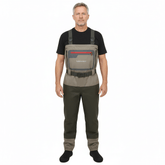

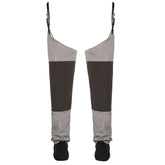
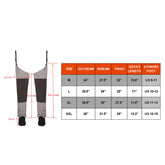
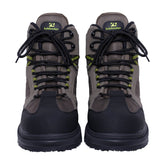
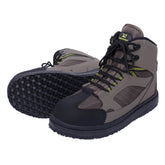
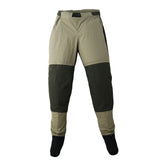

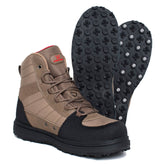
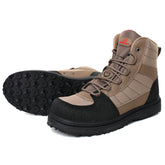
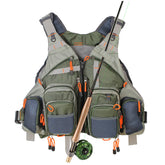

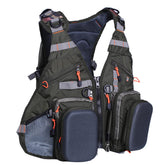
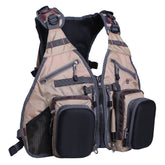
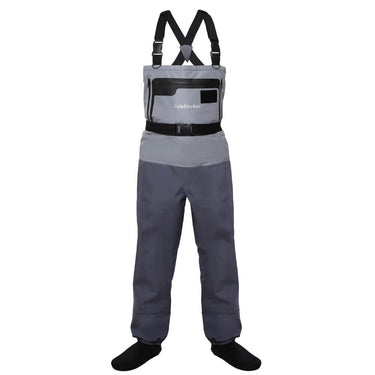
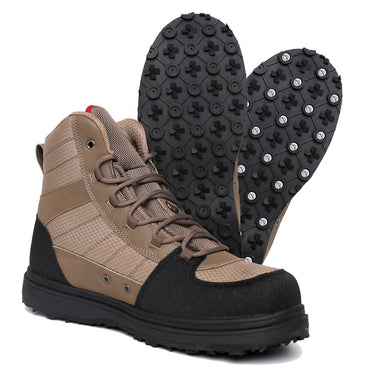

Leave a comment
Please note, comments need to be approved before they are published.